How to Mix Wood Tones in a Kitchen in 2025
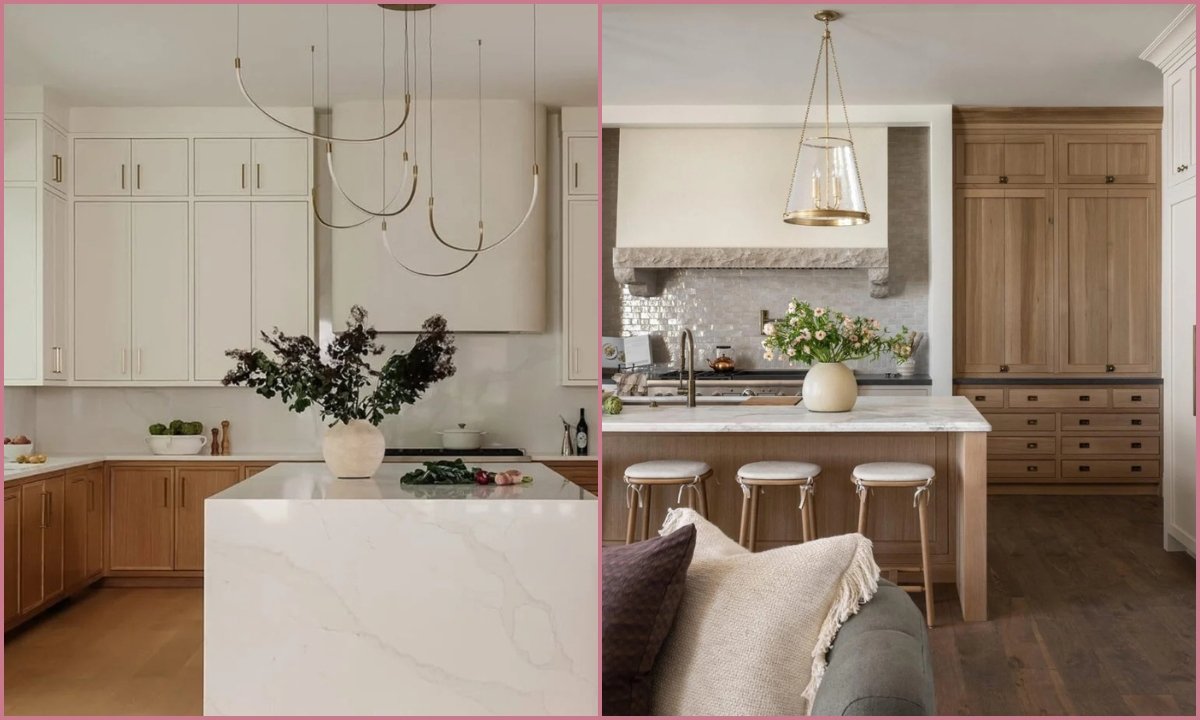
Do you ever look at your kitchen and feel like your wood finishes just don’t go together?
Maybe you chose oak cabinets, flooring ended up walnut, and the island came with a completely different stain.
You might notice that instead of giving you the warm, inviting vibe you want, your space feels mismatched and overwhelming. You don’t need to rip everything out to fix it.
In this article, you will learn how to mix wood tones the right way so your kitchen feels layered, stylish, and cohesive without losing unique character.
Let’s jump in!
How to Combine Different Wood Tones?
The key to mixing wood tones in your kitchen is balance.
You can start by choosing one dominant wood finish like flooring or cabinetry and let it set the foundation for your space.
Then, you can bring in one or two contrasting tones through your furniture, shelving, or accent pieces.
You should always match undertones warm with warm, cool with cool, so your mix feels intentional instead of random.
Finally, when you repeat each tone at least twice, you’ll notice how your kitchen instantly gains flow and a pulled-together look.
5 Ways to Mix Wood Tones in a Kitchen
1. Choose One Anchor Wood First
You have to start by picking a leader for your kitchen, and you should remember that it’s usually the floor or main set of cabinets.
You can think of this as your anchor wood, because its color, undertone, and grain will set the mood for the rest of your space.
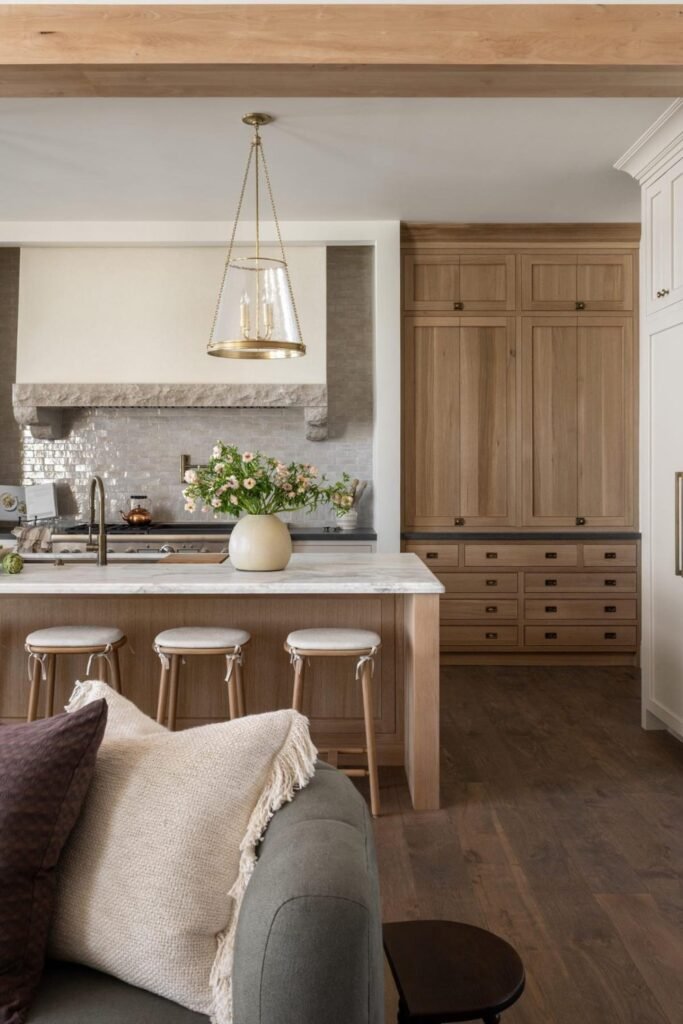
Once you know your anchor, you’ll find it much easier to see which other woods will work with it.
For example, if you have a warm oak floor that becomes the base, every other wood choice you make needs to play nicely with it.
Without this anchor, you’ll quickly notice that everything feels like it’s fighting for your attention.
2. Match Undertones, Then Add Contrast
You should know that every wood you bring into your kitchen comes with an undertone warm, cool, and neutral.
You can usually tell warm woods by their yellow, red, or orange hints, while cool woods lean gray or ashy.
Neutrals, on the other hand, can swing either way depending on what you pair them with.
You need to keep your undertones in the same family so your space feels harmonious instead of clashing.
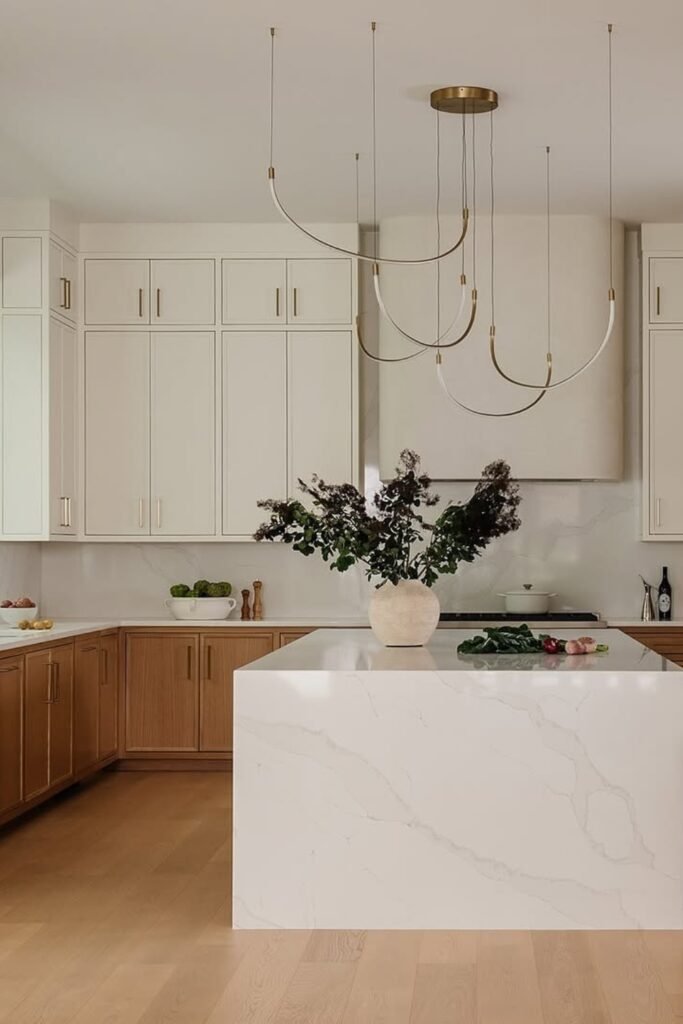
Once you’ve matched undertones, you can use contrast by playing with light and dark values.
For example, if you have a light maple floor, you can pair it with a dark walnut island, and the whole look will feel balanced as long as both share warm undertones.
When you match undertones, you make your kitchen feel natural and cohesive, and when you add contrast, you give it that extra personality and depth.
3. Repeat Tones so the Room Feels Connected
You should know that the biggest mistake is using a wood tone only once.
Your eye will read it as an accident. Instead, you can follow what I like to call the echo rule: every wood should appear at least twice.
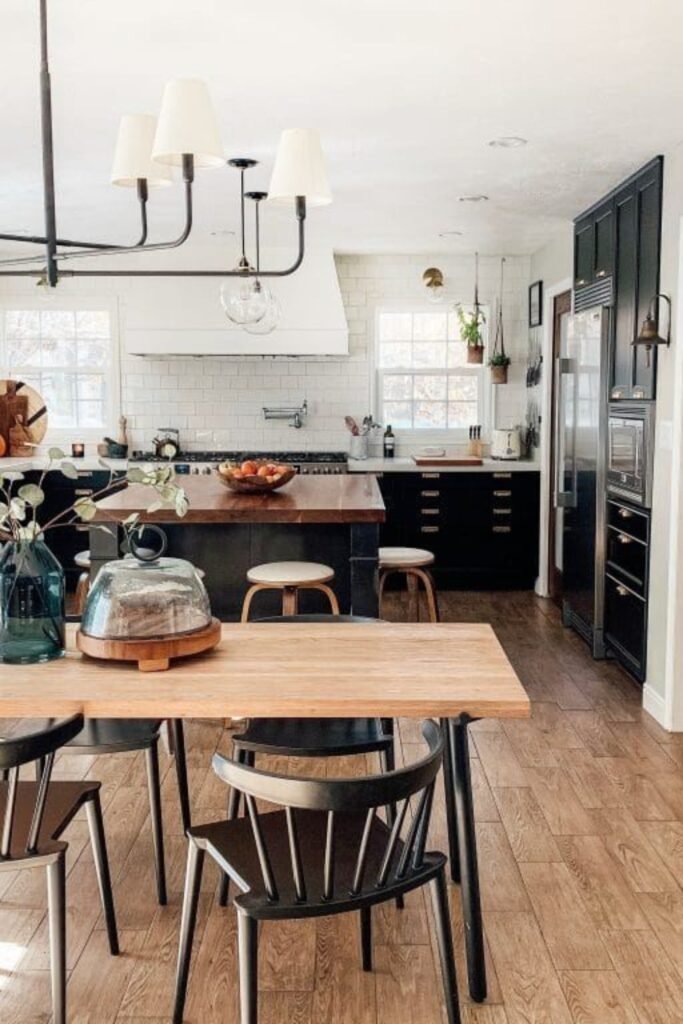
If you add a darker wood on the island, you can repeat it on open shelves or bar stools.
If you bring in a pale wood on the countertop trim, you can echo it in a piece of furniture.
This repetition will make the design feel intentional and tie the whole room together.
4. Balance Grain and Finish for a Clean Look
You should remember that wood isn’t just about color and grain; finish matters just as much.
You will notice that a busy oak grain can feel overwhelming if it is paired with another heavy grain.
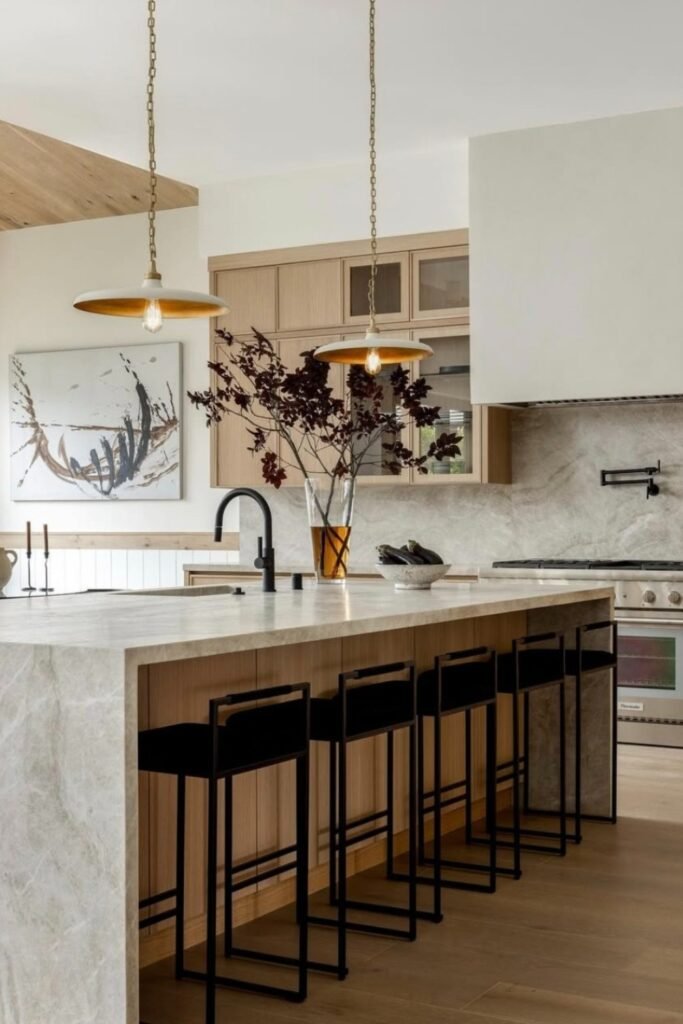
You can calm it down by adding a smooth wood, like maple. You should also keep in mind that finishes change how wood feels.
Glossy surfaces reflect light and look sleek, while matte finishes soften and ground the room.
You can find balance by pairing one bold grain with one simple grain, because two bold grains next to each other can feel too loud.
5. Use Metals, Stone, or Paint to Bridge Woods
When wood tones don’t sit well together, you can always rely on a little trick: bridging materials.
Think about how brass or gold hardware can instantly warm up a cool gray wood, or how black handles and light stone countertops can act like neutrals that quietly tie everything together.
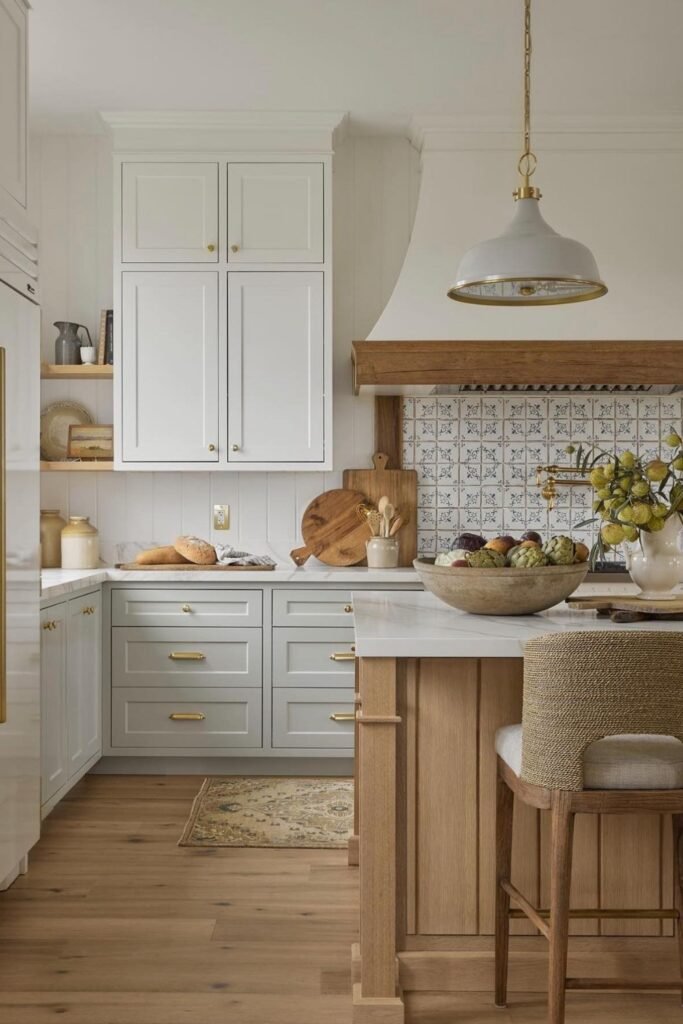
You can even use paint as a bridge, a cream island between two different woods, which can soften the contrast and give your eyes a break.
These non-wood materials will work like buffers, helping the mix feel smoother so nothing clashes.
Can You Mix Light and Dark Wood Tones in a Kitchen?
Yes, you can absolutely mix light and dark wood tones, and when you do it the right way, your kitchen will feel layered and rich.
You can bring in light woods, like oak or maple, to brighten the space and keep it feeling open.
Then, you can balance them with dark finishes, like walnut or espresso, on cabinets or accents to add contrast.
To keep it from clashing, you should repeat each tone in more than one spot, and you’ll see how the design starts to look unified instead of accidental.
Do You Really Need to Test Woods in Real Lighting?
Yes and it’s the step you might be most tempted to skip. Wood can completely change under different light.
A plank that looks warm and rich in daylight might turn orange under yellow bulbs or even gray under cool LEDs.
That’s why you should always test before making final decisions.
Place your samples upright in the kitchen instead of flat on a table, and check them in the morning, afternoon, and evening.
If the tones still feel right in every light, you’ll know you’ve made the right choice.
Conclusion
Mixing wood tones in your kitchen is easier than you think, you just need the right steps.
You can start by choosing an anchor wood; you keep undertones in the same family, and you add contrast with light and dark finishes.
You have to repeat each tone so it feels intentional, and you test everything in your real lighting. If something feels off, you can adjust it.
Do this, and you will get a kitchen that will look warm, natural, and perfectly balanced.
FAQs
Do Kitchen Cabinets Have to Match the Floor?
No, your cabinets don’t need to match your floor exactly and that’s a relief.
What really matters is that they should share the same undertone family. For instance, you might have a warm oak floor, and it can pair beautifully with a dark, warm walnut cabinet.
When the undertones match, the whole look feels balanced and connected, even if the colors themselves are different.
How Many Wood Tones Should I Use in A Kitchen?
You don’t need a dozen different wood tones in your kitchen; two or three are usually enough. Go beyond that, and the room can start to feel chaotic.
The trick is to repeat each tone at least twice so it looks intentional.
For example, you can use the same wood on your island and shelves, or echo it on your stools and trim. That way, everything will feel tied together instead of random.
You may love to read!
